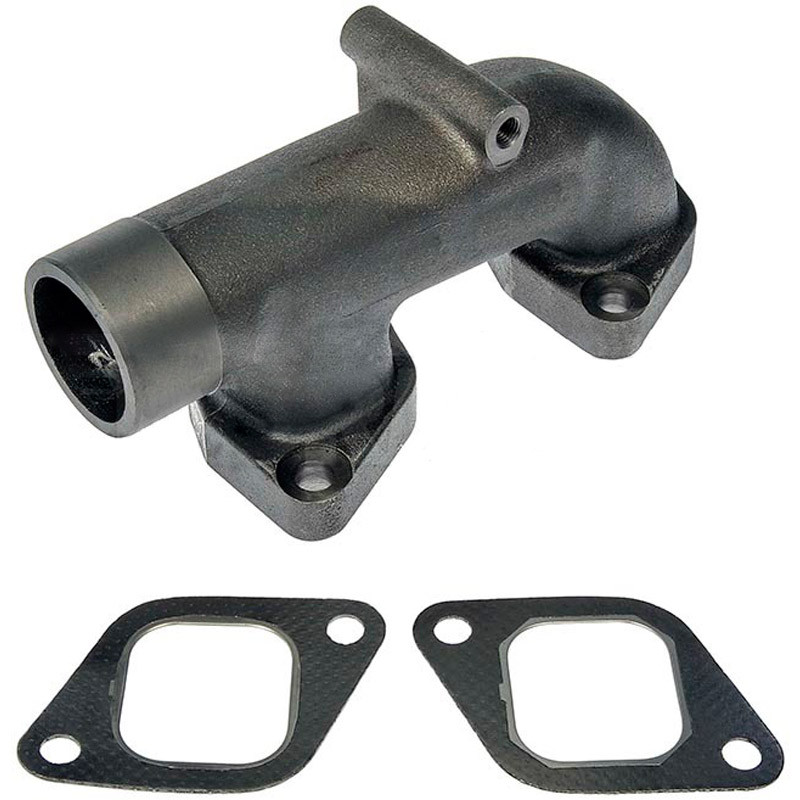

This is a good reminder to use fuel system cleaners to remove carbon buildup.Ī failed gasket also allows fresh air into the exhaust system at a point it wasn’t designed for, which could lead to burned exhaust valves. This can cause a gasket to catch fire or expand outward. A lack of engine maintenance and carbon buildup, however, can cause hot spots in the combustion chambers and exhaust ports. Generally, exhaust manifold gaskets are hardy items, often lasting well over 100,000 miles. The gasket prevents noxious gases and incredibly high temperatures from escaping the engine at the wrong point. The gasket is an airtight seal against the head, so the gasses pass into the exhaust manifold and onto the rest of the exhaust system.

The gasket is made of layers of metal or composite materials and prevents leaks as the two metal surfaces go through countless heating/cooling expansion and contraction cycles over an engine’s operational life.ĭuring the exhaust stroke, the exhaust valve opens to allow spent gases to exit the combustion chamber through the exhaust port in the cylinder head. The exhaust manifold gasket, as with any gasket, acts as a sealing surface sandwiched between two different metal components. The processes occurring can be explained by the gas laws, specifically the ideal gas law and the combined gas law. The goal of performance exhaust headers is mainly to decrease flow resistance (back pressure), and to increase the volumetric efficiency of an engine, resulting in a gain in power output. Although this is cheap and fairly simple, it can lead to premature degradation of the manifold. Exhaust wrap is wrapped completely around the manifold.This is often used on performance production cars and track-only racers. A ceramic mixture is bonded to the manifold via thermal spraying to give a tough ceramic coating with very good thermal insulation.These are usually thin, so have little insulatory properties however, they reduce engine bay heating by lessening the heat output via radiation. Ceramic paint is sprayed or brushed onto the manifold and then cured in an oven.There are a few types of thermal insulation but three are particularly common:

This decreases the amount of heat given off into the engine bay, therefore reducing the intake manifold temperature. Polished stainless steel will also color (usually a yellow tint), but less than chrome in most cases.Īnother form of modification used is to insulate a standard or aftermarket manifold. Chrome-plated headers are available but these tend to be blue after use. They may be coated with a ceramic-type finish (sometimes both inside and outside), or painted with a heat-resistant finish, or bare. The most common types of aftermarket headers are made of mild steel or stainless steel tubing for the primary tubes along with flat flanges and possibly a larger diameter collector made of a similar material as the primaries. Headers that do not have collectors are called zoomie headers. These consist of individual exhaust head pipes for each cylinder, which then usually converge into one tube called a collector. For many engines, there are aftermarket tubular exhaust manifolds known as headers in American English, extractor manifolds in British and Australian English, and simply as “tubular manifolds” in British English.
#EXHAUST MANIFOLD CRACK#
Manifolds can crack over time due to the stress from constant, extreme temperature changes.Įxhaust manifolds are generally simple cast iron or stainless steel units which collect engine exhaust gas from multiple cylinders and deliver it to the exhaust pipe. The exhaust manifold is exposed to the extremes – it’s heating and cooling, which causes constant expansion and contraction. In automotive engineering, an exhaust manifold collects the exhaust gases from multiple cylinders into one pipe.


 0 kommentar(er)
0 kommentar(er)
